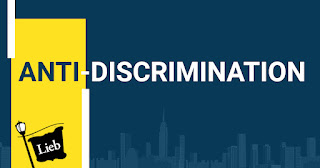On June 18, 2025, we wrote about "New Discrimination Complaint Filing and Investigation Procedure in NYS Proposed by Division of Human Rights."
At that time, we didn't have the proposed regulatory text - now we have it. It's 9 pages long so we won't give you it all, but here is the most interesting outtakes (underlines are additions and brackets are deletions):
- 465.2 Service of papers. Determinations, notice of hearing, complaints, respondents' answers, and division decisions, findings of fact and orders shall be served by personal service [or registered or certified mail, or ordinary], first class mail, email or other appropriate electronic means. [However, where a nonresident person or foreign corporation is charged with violating any provision of the law by virtue of the provisions of section 298-a thereof, the complaint and notice of hearing shall be served only by personal service or by registered mail, return receipt requested, directed to such person or corporation at the last known place of residence or business.] - this is interesting because lawsuits don't permit service by email, but now administrative proceedings permit it without advance order of the administrative law judge.
- 465.3 Complaint.
- (a) Who may file:
- (2) an organization claiming to have suffered an injury because of alleged unlawful discriminatory practice(s) or whose members, clients or those they represent have suffered an injury because of such practice(s); - this is interesting because it gives standing to organizations whose members or clients have suffered an injury (think non-profit community organizations).
- [(4) Any complaint filed in accordance with paragraph (1), (2), or (3) of this subdivision may be filed on behalf of a class of persons similarly situated.] - this is interesting because it eliminates class actions.
- (b) Form.
- [(e)] (d) Time of Filing. The complaint must be filed within [one year from the date of the occurrence of the alleged unlawful discriminatory practice] three years from the date of the occurrence of the alleged unlawful discriminatory practice (or within one year for alleged sexual harassment in employment occurring prior to August 12, 2020, or for any other alleged discrimination occurring prior to February 15, 2024). If the alleged unlawful discriminatory practice is of a continuing nature, the date of its occurrence shall be deemed to be any date subsequent to its inception, up to and including the date of its cessation. - this is interesting because it acknowledges the different times that the statute of limitations was expanded, first for sexual harassment and then, for every other protected class, but expressly does not provide retroactivity.
- [(f)](e) Manner of filing. [The complaint may be filed by personal delivery, ordinary mail, registered mail or certified mail, addressed to any of the division's offices.]
- (1) Reporting discrimination. Prior to filing a complaint, a complainant must provide information and documentation to support the allegations of discrimination to the division. The information must be submitted on a form promulgated by the division.
- (i) Online. The division form may be submitted online through the division’s portal which can be accessed on the division website. The user will be prompted to fill out the web-based form.
- (ii) By Telephone. A division form may be submitted by telephone through the division’s call center. A representative will assist the caller by taking in necessary information and reducing the information to writing utilizing the division’s web-based form.
- (iii) In the discretion of the division, reports of discrimination received via other means may be accepted as submitted.
- (iv) The submission of a division form or other report of discrimination does not constitute the filing of a complaint of discrimination.
- (2 ) The division will review the submitted form. The division may make corrections for formatting, jurisdictional or other requirements or request additional information or documentation.
- (3 ) After review and any corrections, the information contained in the approved form will become the complaint. The division will return the complaint to the complainant for verification and filing with the division.
- (4 ) A complaint will be deemed filed once it has been verified, submitted and received by the division. - this is going to be an unmitigated disaster because the complaint is jurisdictional and must be filed within the time periods set forth above (generally 3 years), but now this requires the Division to act before the complaint can be filed and there are going to be many cases dismissed based on this gap on waiting for the Division to act; anyone who works with DHR knows that they are overwhelmed and this will take time, lots of time.













